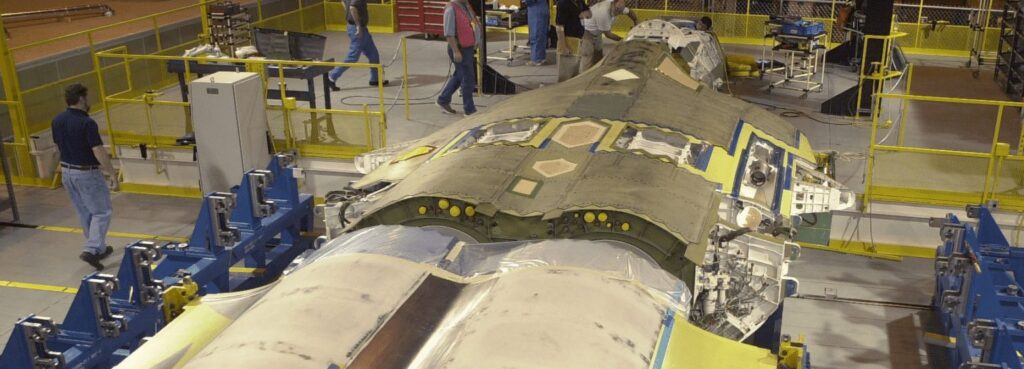High-Tech Calibration: How Machine Vision Ensures Accuracy in Aircraft Production

In the intricate world of aircraft production, where precision is paramount, the role of technology in calibration cannot be overstated. High-tech calibration, particularly through the lens of machine vision, has emerged as a game-changer. This article delves into the nuances of how machine vision, with its advanced capabilities, ensures unparalleled accuracy in aircraft production, revolutionizing the way components are calibrated and manufactured.
Introduction
Calibration in aircraft production is akin to fine-tuning a symphony – each component must harmonize perfectly for the aircraft to perform at its best. Machine vision, a technology that replicates and enhances human vision through advanced cameras and image processing, has taken center stage in the quest for precision. This article explores the multifaceted role of machine vision in high-tech calibration, unraveling the complexities it addresses and the transformative impact it has on the accuracy of aircraft production.
The Significance of Calibration in Aircraft Production
- Precision in Aircraft Components:
- Explanation: Aircraft components, from structural elements to intricate systems, demand precision for optimal performance.
- Role of Calibration: Calibration ensures that each component meets stringent specifications, contributing to the overall reliability and safety of the aircraft.
- Challenges in Traditional Calibration Methods:
- Explanation: Traditional calibration methods may fall short in addressing the intricacies of modern aircraft designs.
- Role of Technology: High-tech calibration, especially through machine vision, overcomes the limitations of traditional methods, offering a more accurate and efficient solution.
Understanding Machine Vision in Calibration
- Real-time Measurement Capabilities:
- Machine vision systems provide real-time measurements of critical parameters.
- This ensures that calibration adjustments can be made instantly, minimizing the margin for error and improving overall efficiency.
- Adaptive Calibration Techniques:
- Machine vision allows for adaptive calibration techniques.
- These techniques dynamically adjust the calibration process based on real-time data, accommodating variations in materials, environmental conditions, and component geometry.
- Eliminating Human Error:
- Automation through machine vision eliminates the potential for human error in the calibration process.
- This results in a higher level of consistency and precision, crucial for meeting the strict standards of aircraft production.
Applications of Machine Vision in Aircraft Calibration
- Composite Material Calibration:
- Explanation: Aircraft components increasingly use composite materials, posing unique challenges for calibration.
- Machine Vision Application: Machine vision excels in calibrating composite materials, providing accurate measurements and adjustments to meet specifications.
- Drill and Fastener Calibration:
- Explanation: Precision in drill and fastener placement is vital for structural integrity in aircraft.
- Machine Vision Application: Machine vision ensures precise calibration of drill depths and fastener positions, contributing to the structural robustness of the aircraft.
- Dynamic Calibration During Production:
- Explanation: Calibration isn’t a one-time process; it needs to adapt during various stages of production.
- Machine Vision Application: Machine vision facilitates dynamic calibration, making real-time adjustments as components progress through different manufacturing stages.
Case Studies: Machine Vision in Action
- Case Study 1: Wing Component Calibration:
- Machine vision, integrated into the calibration process, showcased exceptional precision in calibrating complex wing components.
- Real-time adjustments ensured tight tolerances were consistently met, even with variations in material properties.
- Case Study 2: Automated Drill Calibration:
- Automation through machine vision transformed drill calibration processes.
- Real-time measurements and adaptive calibration techniques reduced errors in drill depths, contributing to enhanced structural integrity.
Future Trends and Industry Impact
- Integration with Artificial Intelligence (AI):
- The future sees increased integration of machine vision with AI for more advanced decision-making.
- This will optimize calibration processes further, learning from historical data and adapting to evolving manufacturing requirements.
- Enhanced Sensor Technologies:
- Advancements in sensor technologies, complementing machine vision, will contribute to even more accurate measurements.
- This ensures that calibration keeps pace with the increasing complexity of aircraft designs.
Conclusion
In conclusion, high-tech calibration, propelled by machine vision, is reshaping the landscape of aircraft production. The integration of real-time measurement capabilities, adaptive calibration techniques, and the elimination of human error underscore the transformative impact of this technology. As aircraft designs evolve, machine vision stands as a crucial ally, ensuring that each component is calibrated with the precision required for optimal performance and safety.
FAQs – Frequently Asked Questions
- Q: How does machine vision contribute to real-time calibration in aircraft production?
- A: Machine vision provides real-time measurements and adaptive calibration techniques, ensuring precision adjustments are made instantly during the calibration process.
- Q: Can machine vision handle the calibration of composite materials used in aircraft components?
- A: Yes, machine vision excels in calibrating composite materials, providing accurate measurements and adjustments to meet specifications.
- Q: What role does machine vision play in drill and fastener calibration for aircraft production?
- A: Machine vision ensures precise calibration of drill depths and fastener positions, contributing to the structural robustness of the aircraft.
- Q: How does machine vision facilitate dynamic calibration during different stages of aircraft production?
- A: Machine vision enables dynamic calibration, making real-time adjustments as components progress through different manufacturing stages.
- Q: What are the future trends in machine vision for calibration in aircraft production?
- A: The future involves increased integration with AI for advanced decision-making and advancements in sensor technologies, ensuring even more accurate measurements.